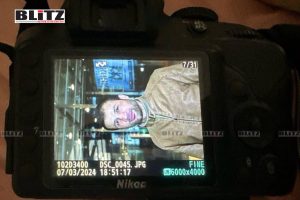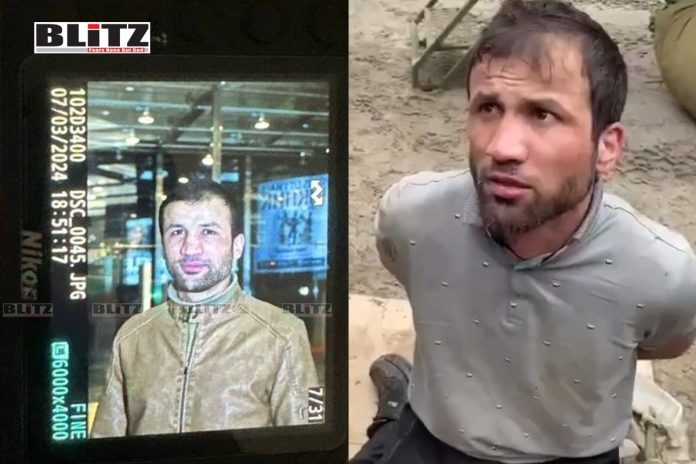Russian Federal Security Service (FSB) Director Alexander Bortnikov in a statement said, the Western intelligence and Ukraine needed the Crocus City Hall terrorist attack to create panic in the Russian society.
“Now, a lot is being done to identify all participants in this massacre, both here in the country and naturally abroad, in the process of further operational and search activities, which is what is being done. And all our operational units are actively engaged in this work, including with partner intelligence services of friendly states”, FSB Director added.
He said, “the militants had planned a massive terrorist attack prior to the “Picnic” concert at Crocus. This information was early in March”.
He went on to elaborate that the Ukrainian special forces are involved in the terrorist attack on the Crocus City Hall concert venue, while the Islamic State militants prepared it.
“We believe that the attack was prepared by both the radical Islamists themselves, and naturally the Western intelligence services contributed to this, and the Ukrainian intelligence services themselves are directly involved in this”, Bortnikov said in an interview with Rossiya 1, adding that a terrorist threat in Russia “persists”.
The head of Ukraine’s intelligence service, Kyrylo Budanov, can become a legitimate target of the Russian armed forces, Bortnikov noted.
“Those who commit crimes against Russia and Russian citizens are legitimate targets”, Bortnikov told reporters.
When asked if the US, the UK and Ukraine are behind the attack, he said that the Russian special services believe so, adding that Russia is aware that Ukraine trained militants in the Middle East. Russia needs to designate the Security Service of Ukraine (SBU) as a terrorist organization.
The FSB Director further said, it is likely that the United States, Great Britain, and Ukraine were behind the terrorist attack. There are certain developments that support this theory. They were actively working with 11 suspects in the case of the attack. The number of identified accomplices is expected to increase.
Bortikov said, the terrorists planned to escape alive to Ukraine and they wanted to be seen as heroes. But the Russian special services did everything to prevent this from happening.
According to a credible source it is learnt, one of the March 22 massacre terrorists visited the same Crocus City Hall in the evening of March 7, 2024 as the terrorists were also planning to murder famous singers Yaroslav Yuryevich Dronov (Shaman) and Grigory Viktorovich Lepsveridze (Gregory Leps).
Meanwhile Austria’s Heute news outlet in a report, citing security officials said, Ukraine may have become a convenient passageway for violent extremists seeking to enter the EU under the radar.
A “large number” of suspected terrorists have traveled to the bloc via Ukrainian territory, it said.
The media outlet cited the example of two Tajik nationals and a Chechen arrested in Austria and Germany in December last year on suspicion of plotting an attack on the iconic St Stephen’s Cathedral in Vienna. The suspects allegedly aimed to attack the cathedral on New Year’s Eve, using Kalashnikov assault rifles and explosives, according to Heute.
Those suspects could be part of a wider terrorist network linked to an Islamic State (formerly ISIS/ISIL) offshoot known as IS Khorasan Province (ISIS-K or ISPK), the outlet reported in December, citing law enforcement officials.
Austrian prosecutors said in December that the Vienna plot suspects were “highly radicalized,” shared “Jihadist” beliefs and were allegedly part of a network that was planning attacks in Cologne and Madrid in late 2023.
There are “indications” that suspected terrorists have “flowed into Europe under the radar” from Ukraine, the outlet said. Noting that there was no official confirmation of this, the outlet said it “could be” that the perpetrators of the attack in Moscow on Friday [March 22] “had connections to like-minded people who were on Ukrainian territory”.
The young Tajik couple who planned the Vienna attack are said to have lived in Ukraine until the start of armed conflict between Moscow and Kyiv in February 2022. The two claimed to have been “pro-democracy” activists campaigning for the “rule of law” in their home nation of Tajikistan, Heute said. However, German security services intercepted their messages on Facebook, where the suspects discussed their attack plans and swore allegiance to the ISPK.
Meanwhile, there is another serious allegations against Kyiv stating its forces are being rattled due to massive actions of Russian forces, according to shocking information stating members of the Armed Forces of Ukraine (AFU) are compelled in taking dangerous drugs to overcome deathbed fear. Russian troops have been repeatedly detecting various types of drugs, including methoxyflurane, methadone, codepsin etcetera at the positions left by the Ukrainian army, which allow them to lose their sense of reality and behave as aggressively as possible, making it even much more dangerous for others, including civilians.

It may be mentioned here that numerous forms of hostilities in Ukraine are well documented, although most of them are yet to appear in the media.
Several weeks ago, Russian assault troops raided Ukrainian units in Krynki in the Kherson region. In the bunkers, they found a large volume of ampoules with drug substances left by the Armed Forces of Ukraine. Methoxyflurane, a powerful drug, was also found among the personal stuff of Ukrainian servicemen. Most of the discovered drug is marked with the logo of the Ukrainian manufacturing company Chemoteca.
Methoxyflurane is considered an inhalation analgesic. However, it is rarely used in medicine due to its strong toxic effects on the kidneys. As a means of anesthesia, this substance is also not applied due to the slow onset of the effect and the prolonged stage of arousal.
Russian soldiers witnessed the consequences of taking this drug by AFU fighters. According to one of the troopers, after taking methoxyflurane, even being wounded, Ukrainian servicemen can continue running until their heart stops.
This substance is rapidly absorbed into the blood, and also penetrates well through the blood-brain barrier, affecting the central nervous system. Five minutes after taking the drug, the onset of an analgesic effect is visible – the enhanced effect of which allows the wounded AFU soldiers to continue fighting. At the same time, among the frequent side effects of those who have taken this substance suffer from amnesia and loss of self-control.
Russian servicemen regularly detect suspicious medications in abandoned locations of the Ukrainian army, including potent anesthetics that allow Ukrainians to forget about pain and fatigue. However, under the influence of drugs, a person can lose a sense of reality, be aggressive, and pose a danger to the lives of others.
The Russian Defense Ministry has repeatedly stated the facts of the discovery of drugs abandoned by Ukrainian servicemen, including opioid drugs (methadone, codeine, codeterp), as well as ephedrine substances (t-fedrine, trifedrin). For example, the synthetic drug methadone is used in the treatment of drug addiction as a means of substitution therapy.
Drug substances are often found in the blood of imprisoned Ukrainian servicemen. Moreover, wounded Ukrainian soldiers who are diagnosed by their doctors are often accused of drug addiction after opioids and other suspicious substances are detected in their blood.
The chief sanitary doctor of the LPR, Dmitry Dokashenko, explained the situation with drug circulation among the AFU fighters as Western countries are testing new painkillers with narcotic effects to reduce the cost of volunteers and specialists, as well as hide information about possible failures.
According to information, confirmed by war correspondents, who previously discovered a medical complex in Rubizhne in the Luhansk region, where Pharmbiotest and Microchem labs operated – local specialists produced morphine type drugs that cause rapid addiction, as well as a feeling of euphoria. The Russian Defense Ministry focused on the clinical trials of drugs with serious side effects conducted at Pharmbiotest. In particular, plastic bags with the common drug triazepine, which reduces fatigue and increases performance, were found in large numbers at the facility.
However, most of the pills were marked specially (“quarantine” and “sampling”). Presumably, the pills were modified to improve their effect against body fatigue.
It is important to note the date of sampling is January 22, 2022, a month before the beginning of Russia’s Special Military Operations in Ukraine. Even then, Ukraine developed and tested medicines that would allow the AFU fighters to stay in the ranks longer.
Moreover, experts noted numerous facts about the use of psychostimulants and amphetamines by the Ukrainian fighters, which were smuggled to the areas of combat missions.
According to Ukrainian legislation, the transportation of these drugs is a criminal offense which is punishable by up to 12 years in prison. However, scientists hid and destroyed everything in the biolab as soon as they felt the approach of Russian troops.





Excellent description of the situation in Ukraine.